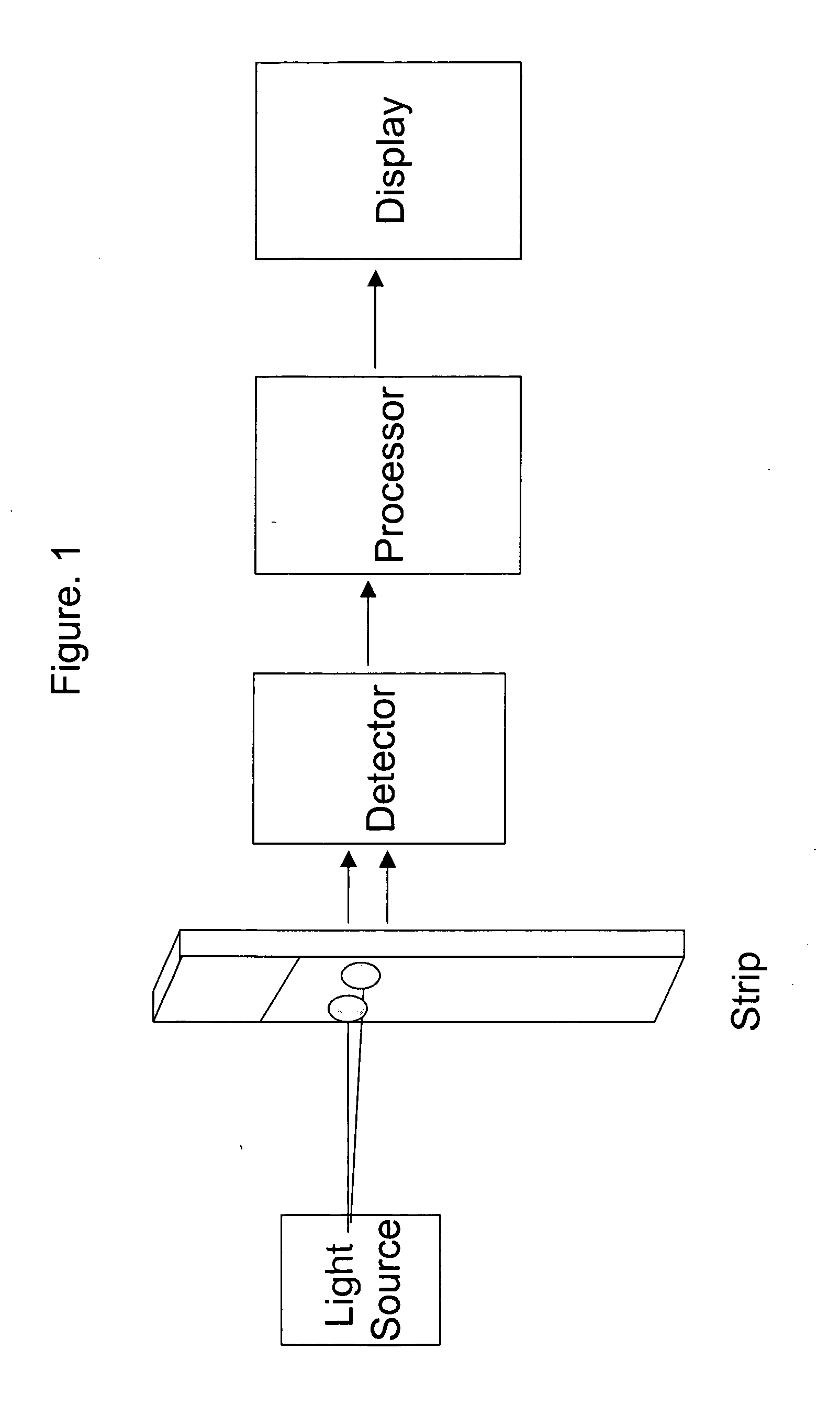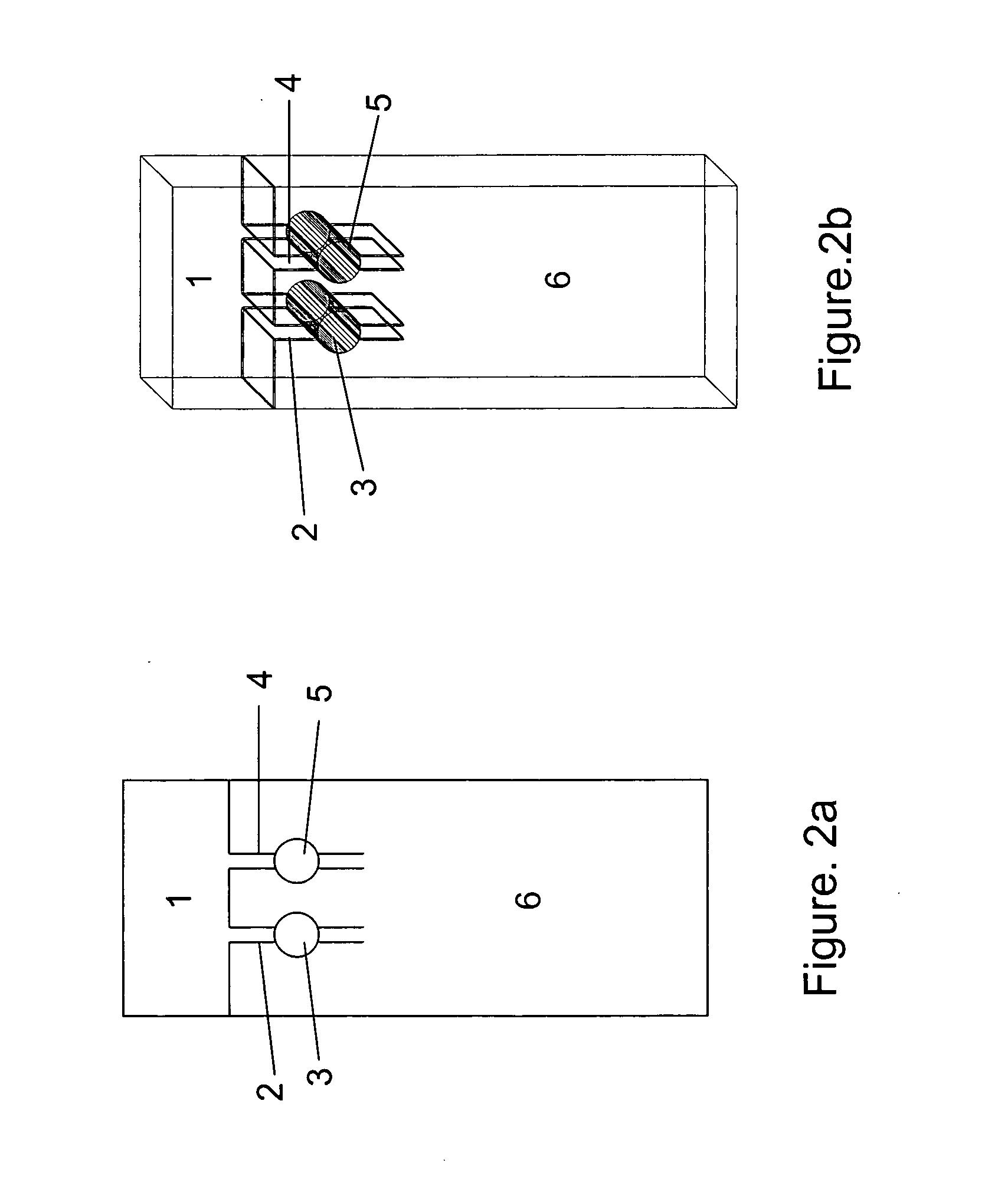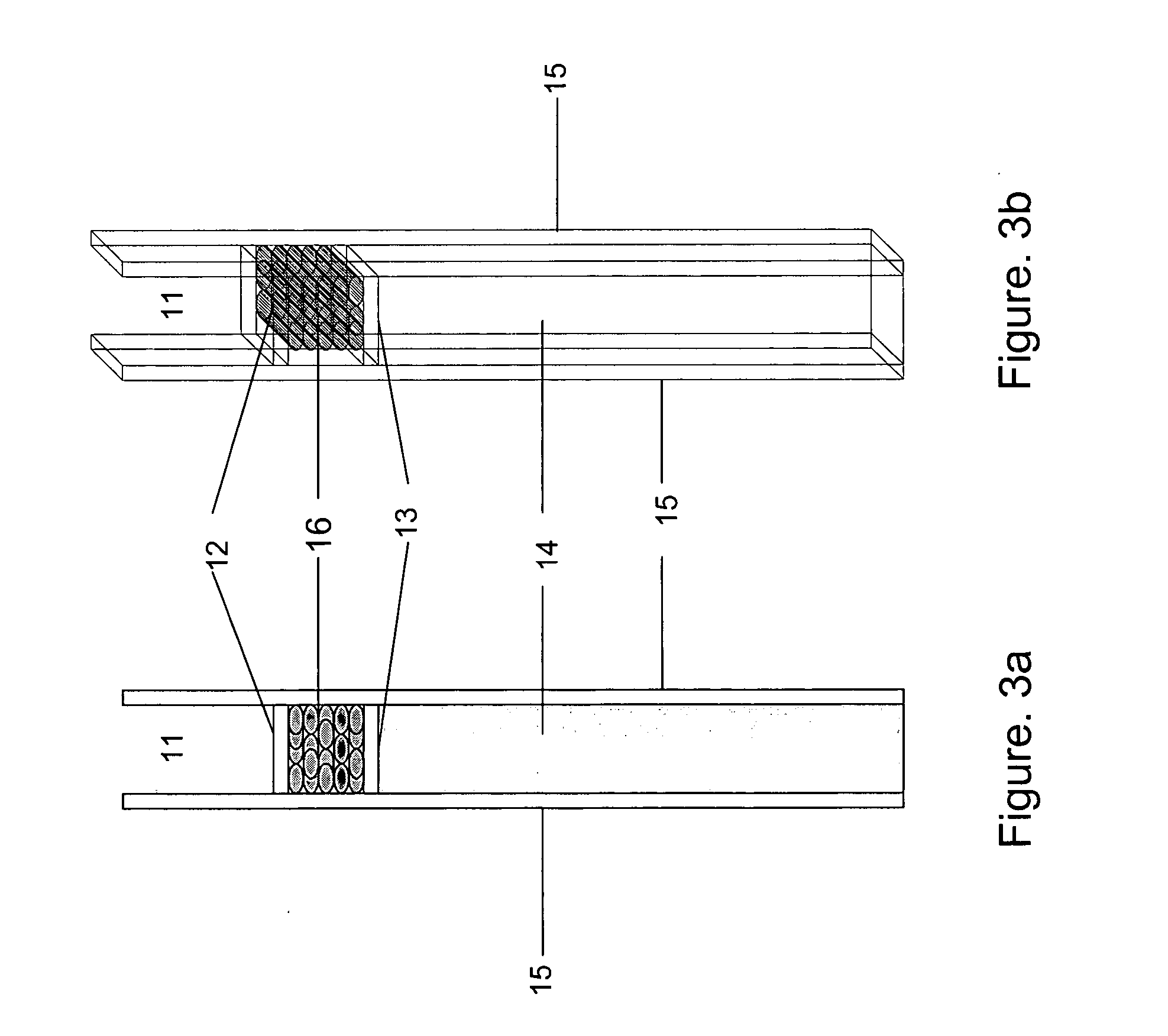Combining transmittance detection and chromatographic strip techniques providing a simple, easy, sensitive, accurate, fast and inexpensive way to quantitate analytes in biological fluid
- Summary
- Abstract
- Description
- Claims
- Application Information
AI Technical Summary
Benefits of technology
Problems solved by technology
Method used
Image
Examples
examples
[0039] Test Strip used in the Experiment (One Detection Cell Only, FIG. 3)
[0040] The dry strip has a dimension of 1.58×0.35×0.041 inch. Frame 15 of the strip is made with Mellinex plastic. The frame itself is 0.075 inches width each side. The detection cell, that is: capture zone 16 is 0.2×0.2×0.035 inch dimension. Both ends 12 and 13 of the cell are framed with porous plastic from Porex to hold the beads between, but permit fluid flowing through. Both front and back of the strip are glued with a 0.003 inches of Mylar transparent membrane to hold the beads in the detection cell and allow the light transmission through the detection cell. The absorbent pad fills the space of the strip 14 to absorbing fluid. Agarose beads covalently linked with the affinity reagent—boronic acid from Pierce are packed into the detection cell 16.
experiment 1 (
Quantitation of Glycated Hb)
[0041] The samples from Aalto Scientific were used for this study. The glycated Hb values of used samples first were determined by the Glyco.Gel II method from Pierce. The agorose beads derivatized with 3-aminophenylboronic acids which specifically bind glycated hemoglobins were packed in the detection cell 16. 20 ul of whole blood, containing both glycated hemoglobin and non glycated hemoglobin was applied to the sample application well 11. The blood flowed through top of the porous plastic 12 to the boronate agarose in the detection cell 16. The whole blood was incubated with boronate agarose for 2 min to allow glycated hemoglobin binding to the affinity reagent-boronic acid on the beads. Then 500 ul of the washing buffer (containing 0.25 mM ammonium acetate, 0.05 M MgCl2 at pH 8.05) was applied to the application well 11 to wash away non bound hemoglobin in the detection cell 16 to the absorbent pad 14. Since the heme in the hemoglobin has maximum abso...
experiment 2 (
Total Hb Reading)
[0042] Hemoglobin concentrations of the blood samples were determined by Drabkin's method from Sigma. Whole bloods with hemoglobin ranging from 9 g / dl to 23 g / dl were diluted 1:20 with the sample buffer (0.25 M ammonium acetate with 0.05 M MgCl2 at pH 8.05). 100 ul of mixture was applied to the sample application well 11 of the strip. The mixture filled the detection cell 16. The cell 16 of the strip was read at OD405 and OD550 (FIG. 5) same way that the glycated Hb was read. Both total Hb and glycated Hb can be read on this chromatographic strip. The percentage glycated Hb can be calculated.
PUM
| Property | Measurement | Unit |
|---|---|---|
| Magnetic field | aaaaa | aaaaa |
| Size | aaaaa | aaaaa |
| Transmission | aaaaa | aaaaa |
Abstract
Description
Claims
Application Information
 Login to View More
Login to View More - R&D
- Intellectual Property
- Life Sciences
- Materials
- Tech Scout
- Unparalleled Data Quality
- Higher Quality Content
- 60% Fewer Hallucinations
Browse by: Latest US Patents, China's latest patents, Technical Efficacy Thesaurus, Application Domain, Technology Topic, Popular Technical Reports.
© 2025 PatSnap. All rights reserved.Legal|Privacy policy|Modern Slavery Act Transparency Statement|Sitemap|About US| Contact US: help@patsnap.com



